Begur, which gives Bangalore a piece of its history
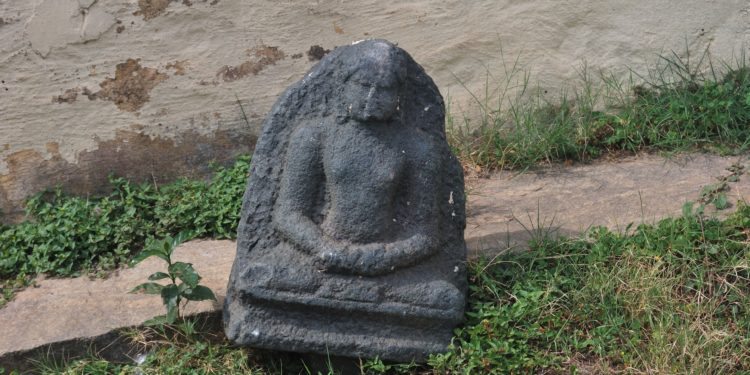
A visit to Begur in Bangalore
Starting the new series on Bangalore with a post on Begur, a settlement which is now a part of the city and its IT corridor. Bangalore has many attractions but the reason I want to start with Begur is that it gives Bangalore, a piece of its history. It lies in a little stone relic – an inscription that mentions the city Bengaluru (or Bangalore, as the British rulers Anglicized it) for the very first time in history.
It was that house in Begur that first caught my attention . There was an open vacant land filled with dry grass that grew in front of it and a narrow path that led to a small village street . A huge compound wall met my gaze, with a small door that was left ajar to reveal a courtyard and a house with pink walls . The rangoli in front of the door looked fresh , but I couldn’t see a soul . A small stone bench was placed near the entrance .
But what really caught my attention was not the house itself. It was a small sculpture placed at the very end of the compound wall, leaning against it. It seemed to sit there placidly , without anyone really disturbing it. I bent down to take a closer look , all the time wondering if I should ask someone for permission to take a photograph. But there was no one around . It was a Jaina sculpture and I stumbled on it when I was looking for the remains of an old Jaina basti in Begur .
Begur is a small village , located in the outskirts of Bangalore . While most villages outside the city have lost their identities, merging somewhere with the IT corridor, Begur struggles to retain its old world charm, even as real estate and rampant construction projects knock at its very door . The banks of the lake have been taken over by multicolored apartment complexes , while the roads are dug up all along the village . The crumbled mud fort that speaks of an erstwhile past shares its compound wall with chaotic constructions. There are buildings and cranes touching the sky and the old temples inside the fort are dwarfed somewhere in between .
My quest however was to understand the heritage of the town and its connect with Bangalore . The settlement itself dates back to the 6th century and its story can be pieced together through the old temples, the crumbling mud fort, the remains of a jain basti , lost inscriptions , broken veerakals or hero stones and scattered sculptures in front of houses . But the best story tellers are the people , who have lived in the village and have passed on their tales to the generations below them . The stories may lack the clinical facts that history books may tell you, but they are laced with a passion and zest that comes from a sense of belonging . As Girish the head priest of the 1000 year old Panchalinga temple said , “ For us , Begur is mula (origin ), only after that comes Bangalore .” The locals were indeed my guides in the village and I saw the village through their eyes . One of the first locals I met was young Vidya and her 98 year old grandfather Subbarama Sastry.
I was standing in front of their house wondering to take a photograph of the Jaina sculpture when a girl in crisp English asked me if I was a researcher. I turned to see Vidya who had just finished her studies in Bangalore and was spending her holidays with her 98 year old grandfather . She invited me inside to meet him.
It was an old house , simple and comfortable and we listened to Vidya and her grandfather talk in a mix of Kannada and Telugu . Vidya’s great grandfather Rama Sastry whose photograph dots the walls of their house had moved in here from Andhra more than 100 years ago and their family had been the officiating priests for more than 30 villages including Begur .”Not just temples, we conducted so many weddings and ceremonies too ,”they told us .The Begur of their days was a quiet village , filled with local festivities. They told me about the ancient Gopalswamy temple in the fort compound, a temple that seemed even smaller than some of the road side temples in Bangalore , but I learnt that the original idol of Venugopal is today placed in the Vishweraya Museum. The grandfather’s memory was hazy but when we spoke about the Jaina sculpture, he squinted hard at me and called it the “Buddha “ which had been around for than 100 years . They directed us to the fort.
A stone entrance with a few pillars and inscriptions were the gossip adda for the local men, while the kids were playing cricket in front of the temples inside the ground. As we roamed around aimlessly , a young man wearing a white T – shirt and shorts walked curiously towards us and proceeded to show us an old well . He then took us to a clearing near the temples and said that in his childhood there was a tunnel in there which had now been buried under the sand.
Ramachandra was a local auto driver who was brought up in the very village , playing cricket like the kids today . It was Sunday and his day off as he catered largely to the IT crowd in the vicinity . He was happy that the IT boom had given him some work , but unhappy that land here was being sold at crazy prices. We chatted a bit about the fort as we walked towards the pillars at the entrance . He mentioned that some historians had copied the inscriptions here ,using a piece of paper by rubbing ink on to it . I later learnt that the inscription related to the death of a chieftain Nagattara’s daughter who fasted to death through a Jain ritual called sallekhana .
Ramchandra looked at the photograph of the headless Teerthankara and suggested that we ask Girish the head priest at the Panchalinga temple for details. Girish ‘s family had been officiating in this 1000 year old temple for generations. There were five shrines that dated back to the Ganga and Chola period – the oldest of them is the Nageswara temple and the remaining four , Nagareshvara, Karneshvara, Choleshvara and Kalikamateshvara were added later. There are several chipped and crumbled veerakalsor hero stones – scattered around the temple.
The connection with Bangalore however was inscribed in a stone that basked in the sun along with broken hero stones or Veerakals. It spoke of a Battle of Bengaluru fought around 900 AD which resulted in the deaths of chieftain Nagattara’s son Buttana-setti . It was apparently the very first time that Bengaluru was mentioned . Girish added that one of the hero stones which documented chieftain Nagattara’s death was now in the Bangalore museum.
I showed him the photograph of the teerthankara and he gave us directions mentioning that the sculptures were out in the open , seated amidst thorny bushes. After losing our way, we finally reached a small patch of land where a residential colony had sprouted out of nowhere . There was a headlless Teerathankara along with another idol of Parshwanatha lying in the undergrowth .Nobody could tell us if it had been a basti , but the sculptures had been long enough to watch the land around them shrink , as houses and colonies were built here , shoving them into a corner plot of land.
Watching them languishing in the wilderness, I realized that Begur itself is getting lost , hemmed in by these construction projects .. The town may house the identity of Bengaluru, but the very identity of Begur lies in that and is being threatened today . Ironically this battle of Begur will probably never be documented unlike the battle of Bengaluru .

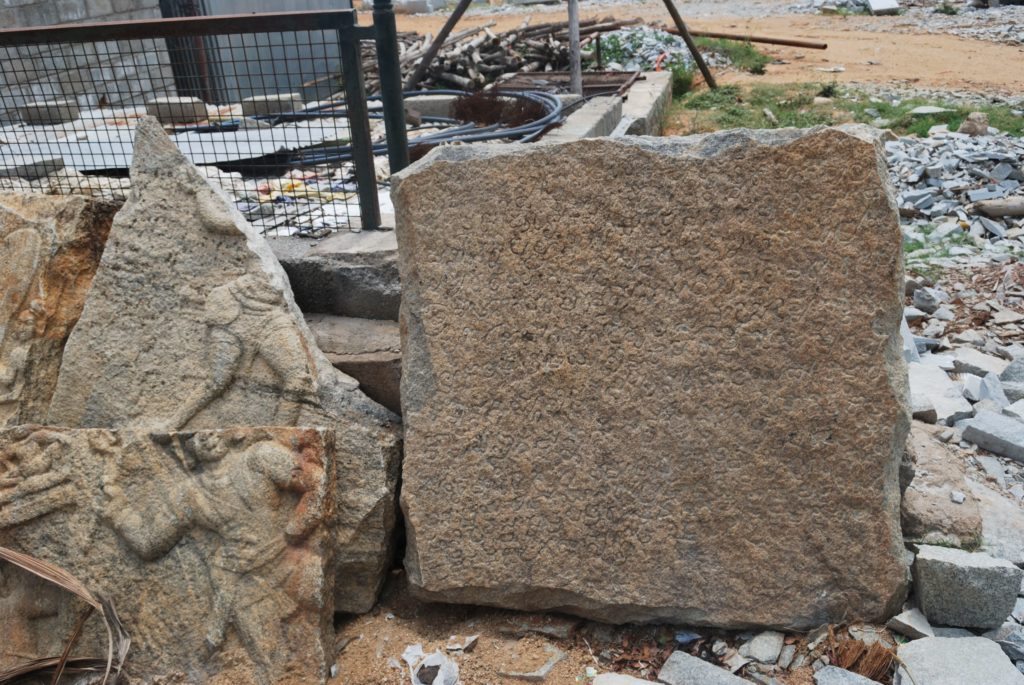
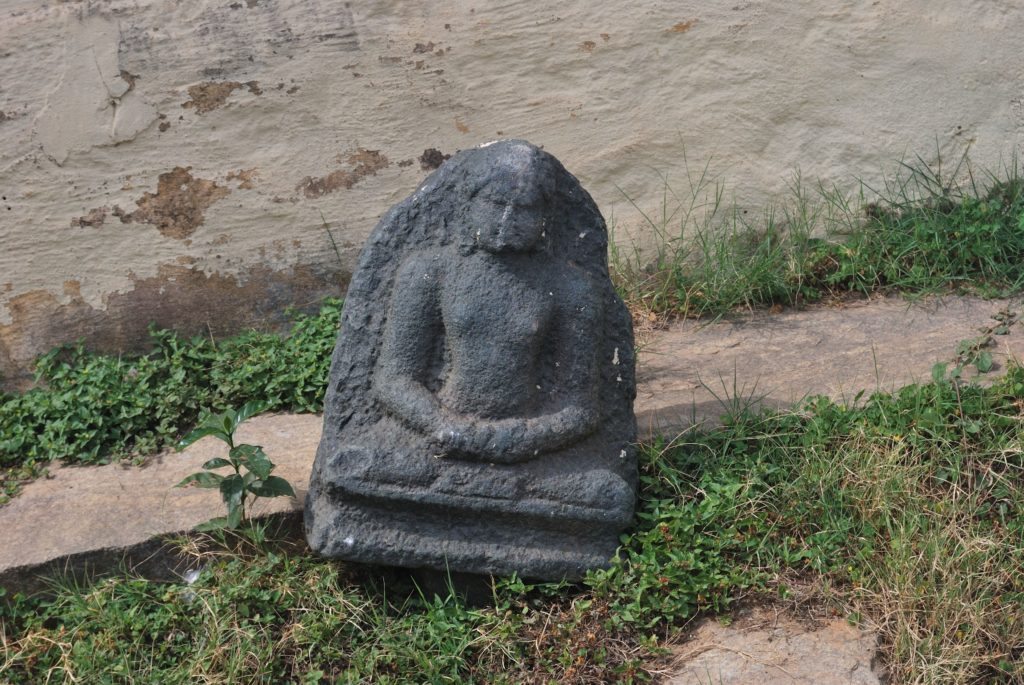

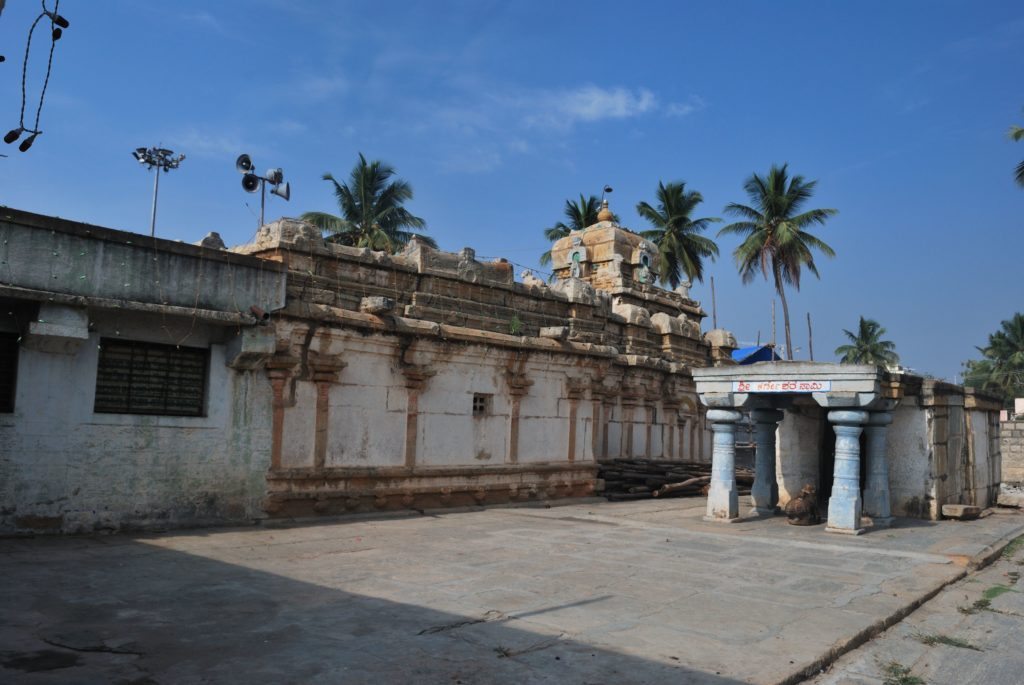
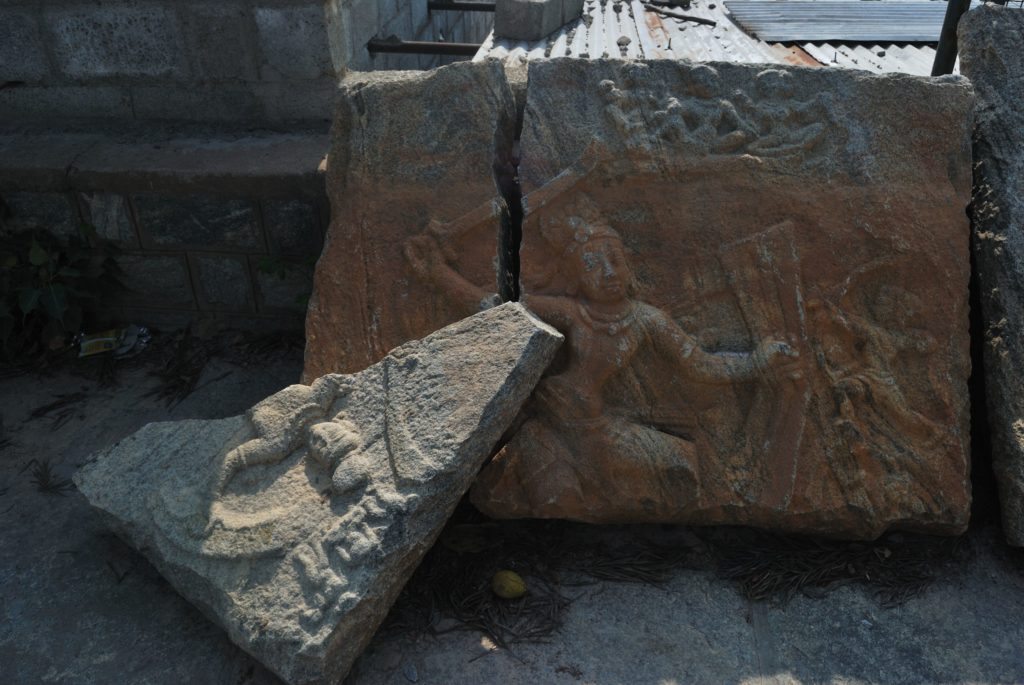
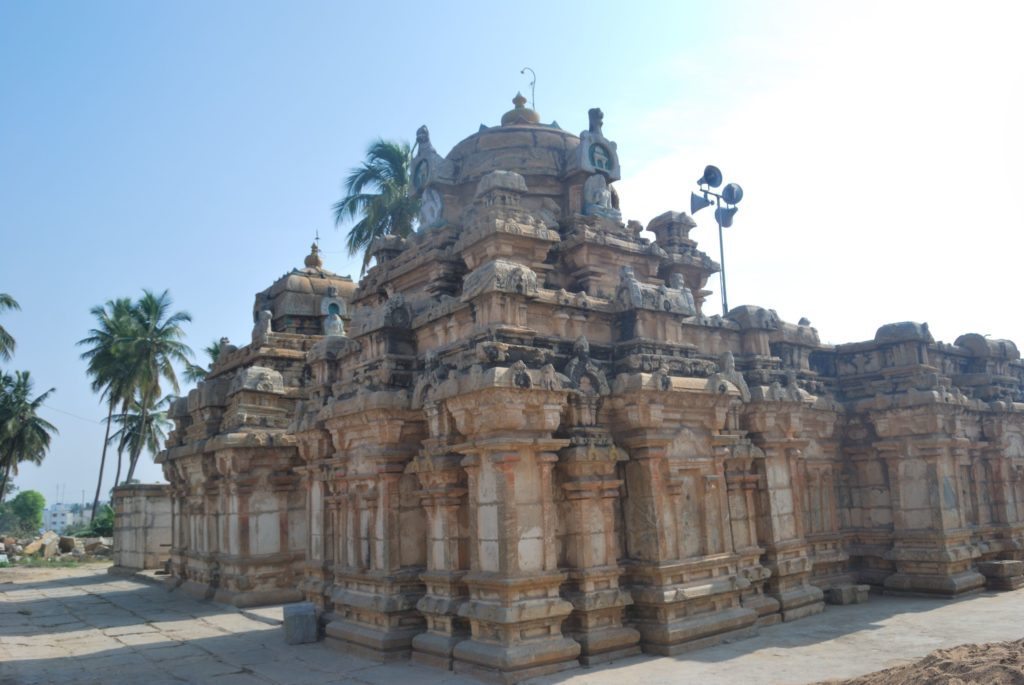
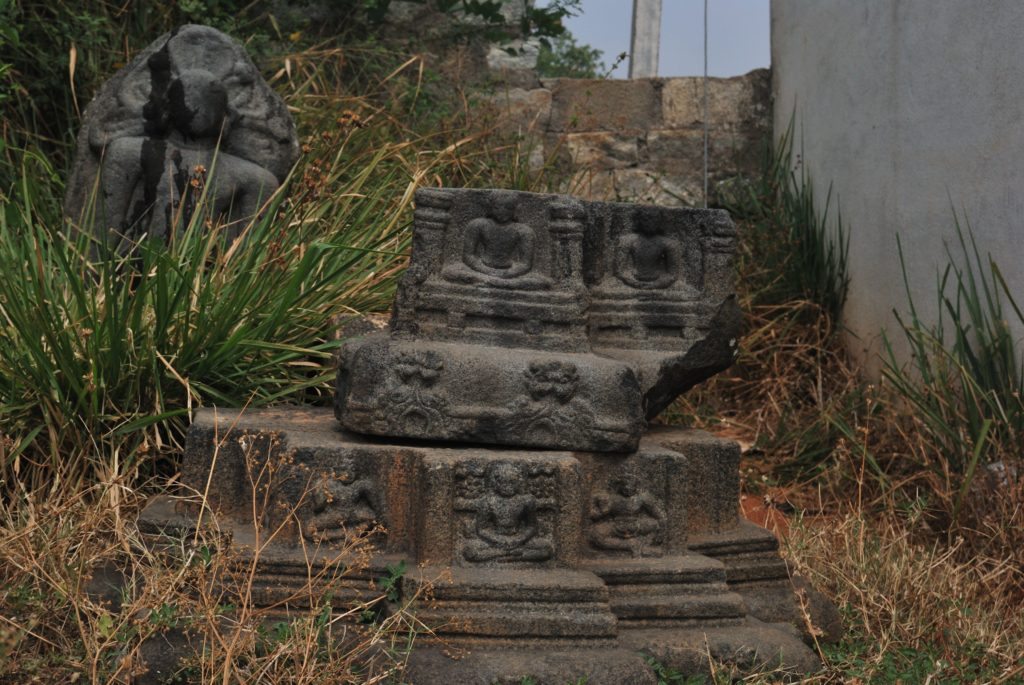
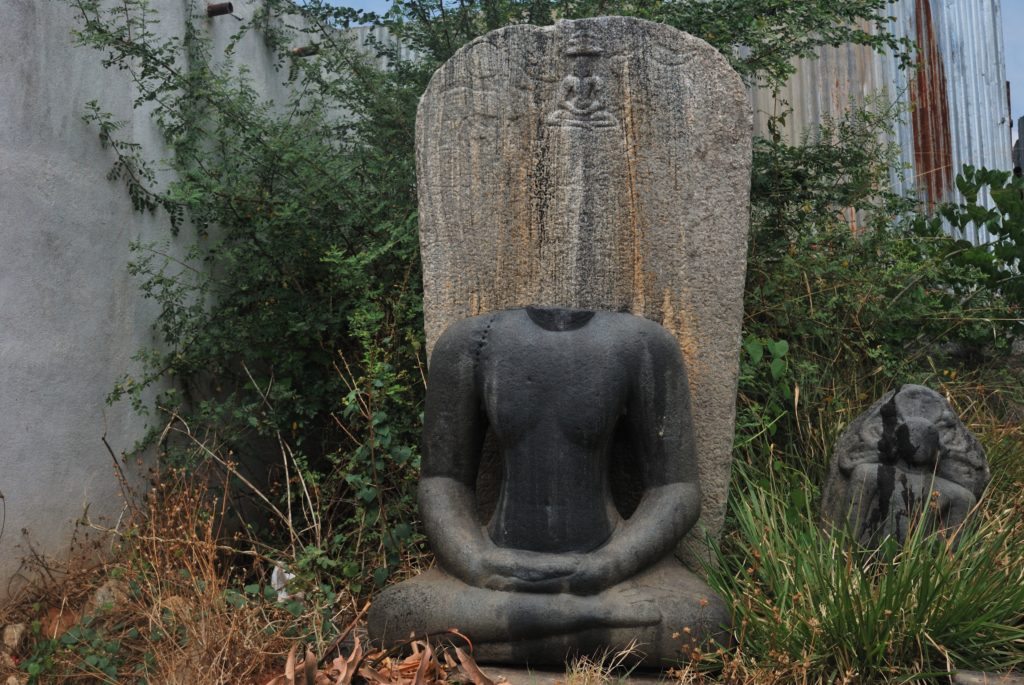
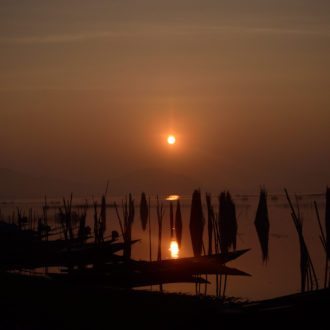
I have a road project in karnataka for which i visit the length and breadth of the state…..i am totally impressed how diverse it is……next time when I am in bangalore…will try to visit begur over the weekend!!
http://www.myunfinishedlife.com
Take me with you on one of your road trips then 🙂 saw your Bijapur posts..very interesting
I worked at Infosys at Electronics City, and used to commute to work by the Begur fort everyday wondering what history is it storing. I visited it one day. I am glad I visited a place that is a main source of Bangalore history. I did not speak to the locals like you did. I would have learnt a lot otherwise. This is a great piece of history that is in shambles. I’ll take pictures next time.
Thanks Kishor 🙂